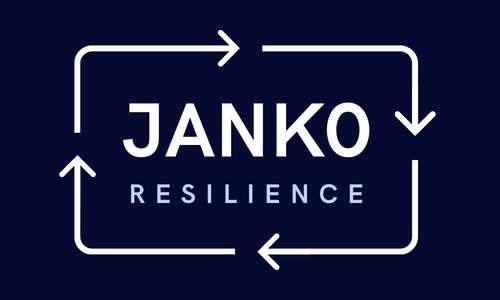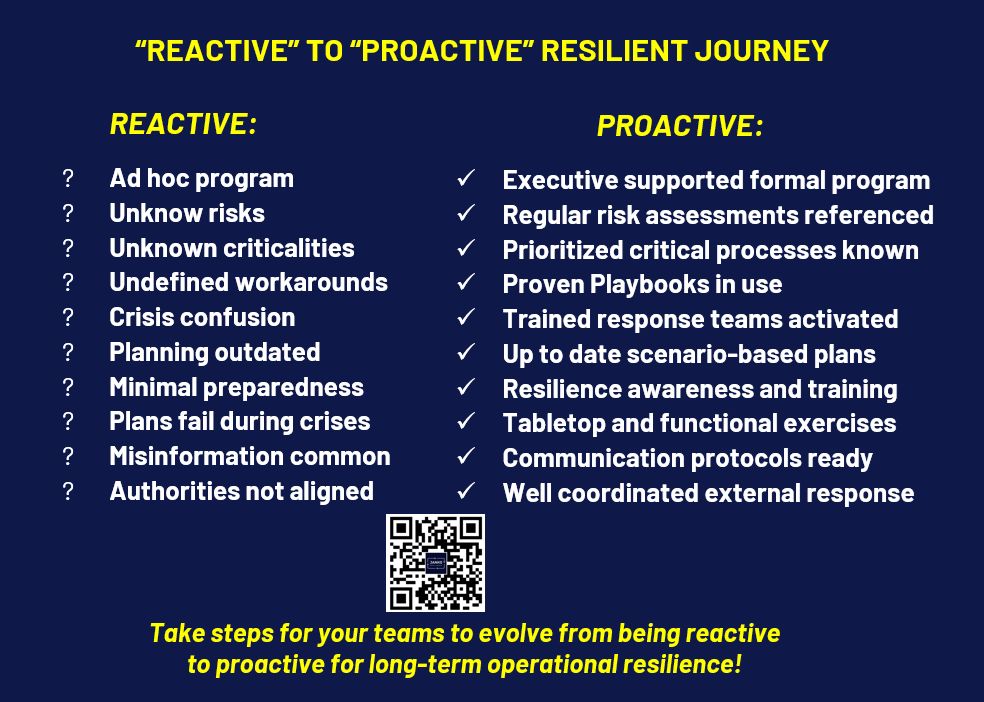In today’s volatile landscape, waiting for disruption before responding is no longer viable. True operational resilience isn’t reactive, it’s strategic.
One of the most effective tools I use when helping organizations shift from reactive problem-solving to proactive planning is the DRI International (Disaster Recovery Institute) 10 Professional Practices. This framework outlines a clear roadmap for building a sustainable resilience program across all departments.
Let’s break it down:
1. Program Initiation and Management
- Reactive: Business continuity is handled ad hoc—if at all—only after an incident occurs.
- Resilient: A formal program is launched with executive support, clear ownership, defined goals, and allocated resources.
2. Risk Assessment
- Reactive: Risk is identified only after damage is done.
- Resilient: Threats—physical, cyber, operational, or reputational—are routinely assessed and addressed before they escalate.
3. Business Impact Analysis (BIA)
- Reactive: Teams scramble to identify what’s mission-critical when systems go down.
- Resilient: A thorough BIA defines recovery priorities, timelines (RTOs/RPOs), and process dependencies long before a disruption hits.
4. Business Continuity Strategies
- Reactive: Workarounds are improvised in the moment.
- Resilient: Strategies are built in advance, tested, and ready to deploy with redundancies in place.
5. Incident Response
- Reactive: Crisis response is chaotic, with no clear leadership or plan.
- Resilient: Roles, responsibilities, and protocols are pre-defined and regularly practiced.
6. Plan Development and Implementation
- Reactive: Plans may be missing—or dust-covered and outdated.
- Resilient: Continuity plans are updated frequently, reflect real-world scenarios, and are integrated across business units.
7. Awareness and Training
- Reactive: Only a select few know what to do in an emergency.
- Resilient: Everyone is empowered with training and a shared culture of preparedness.
8. Plan Exercises, Assessments, and Maintenance
- Reactive: The first time the plan is tested is during a real crisis.
- Resilient: Tabletop exercises and live simulations regularly reinforce readiness and identify opportunities for improvement.
9. Crisis Communications
- Reactive: Inaccurate or delayed messaging damages trust.
- Resilient: Communications are timely, coordinated, and reinforce confidence—internally and externally.
10. Coordination with External Agencies
- Reactive: Partnerships are formed on the fly.
- Resilient: Relationships with emergency services, vendors, and partners are established before they’re needed.
The Bottom Line:
✅ Resilience isn’t just about bouncing back. It’s about bouncing forward—smarter, stronger, and more prepared.
Whether you’re managing risk for a higher education institution, a manufacturing facility, or a tech startup, the DRI framework is a powerful way to align your people, processes, and priorities.
💬 Have you implemented the DRI 10 Professional Practices in your organization? I’d love to hear what’s worked—and what’s next.

